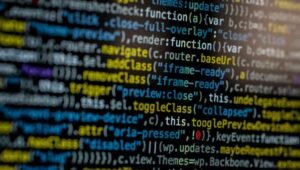Neural Networks Trading
In today’s technology-driven world, neural networks have revolutionized various industries, and the financial sector is no exception. Neural networks enable traders and investors to harness the power of artificial intelligence and machine learning to improve decision-making and reap greater profits in the fast-paced world of trading. This article will provide an overview of neural networks in trading and explore their key benefits and limitations.
Key Takeaways:
- The use of neural networks in trading allows for more informed decision-making.
- Neural networks leverage AI and machine learning to analyze vast amounts of data.
- They can help predict market trends and identify profitable trading opportunities.
Neural networks have transformed the way trading is conducted, offering valuable insights and enhancing trading strategies.
Neural networks are complex systems inspired by the human brain’s neural networks. They consist of interconnected layers of artificial neurons, known as nodes or units, that work together to process and analyze data. Similar to the human brain, these networks learn from experience and adjust their algorithms to improve performance over time.
These networks primarily function in two phases: training and prediction. During the training phase, a neural network is fed historical trading data, enabling it to identify patterns and relationships in the data. The network then optimizes itself by adjusting the weights and biases of its nodes to minimize errors in predicting the training data.
The ability of neural networks to adapt and improve their predictions over time makes them a powerful tool in the trading world.
The Benefits of Neural Networks Trading
Neural networks offer numerous benefits for traders and investors:
- Increased Accuracy: Neural networks have the potential to analyze large volumes of data with speed and precision, allowing for more accurate predictions.
- Pattern Recognition: These networks excel at identifying patterns and trends within vast datasets, helping traders make better-informed decisions.
- Trading Automation: Neural networks can automate trading processes by generating buy and sell signals based on predetermined criteria, reducing human error and emotional biases.
- Improved Risk Management: By analyzing historical data and market trends, neural networks can assist in risk assessment and help traders manage their portfolios more effectively.
The ability of neural networks to automate trades and enhance risk management strategies provides traders with a competitive edge in the market.
Limitations and Challenges of Neural Networks Trading
While neural networks offer significant advantages, they also come with their own set of limitations and challenges:
- Data Complexity: Neural networks require large quantities of high-quality, well-labeled data for effective training. Insufficient or inaccurate data can limit their performance.
- Complexity and Interpretability: Neural networks are highly complex models, and interpreting their internal workings can be challenging. This lack of interpretability may limit traders’ understanding of why certain predictions are made.
- Overfitting: Neural networks may overfit the training data, causing them to perform poorly on unseen data. Regular validation and fine-tuning are necessary to avoid this issue.
Overcoming the challenges associated with neural networks requires careful data management and model validation to ensure accurate predictions.
Neural Networks in Trading: Real-Life Examples
| Company | Application | Impact |
|---|---|---|
| Algorithmic Trading | Increased trading efficiency and profitability. | |
| BlackRock | Portfolio Management | Better risk assessment and optimized asset allocation. |
Table 1: Examples of companies utilizing neural networks in trading.
Neural networks have already found application in various trading scenarios. For instance, Google applies neural networks in algorithmic trading to enhance their trading efficiency and improve profitability. BlackRock, one of the largest asset management firms, utilizes neural networks for portfolio management, enabling better risk assessment and optimized asset allocation.
The Future of Trading with Neural Networks
The future of trading is undoubtedly intertwined with the advancement of neural networks and AI technologies. As computational power increases and algorithms become more sophisticated, the accuracy and efficiency of neural networks will continue to improve.
Investment firms and individual traders alike are increasingly embracing neural networks as they strive to gain a competitive edge in the ever-evolving financial market. These networks have the potential to revolutionize trading strategies, expand the range of tradable assets, and enhance risk management techniques.
Conclusion
Neural networks have heralded a new era in trading by leveraging AI and machine learning to analyze vast amounts of data rapidly. By harnessing the power of neural networks, traders can make more accurate decisions, identify patterns, automate trading, and manage risks more effectively. Despite the challenges associated with data complexity and interpretability, the benefits of neural networks in trading are already being realized by leading companies in the industry, and the future holds exciting possibilities as these technologies continue to advance.

Common Misconceptions
Neural Networks Trading
Neural networks trading, also known as algorithmic trading or automated trading, is a popular approach to buying and selling financial securities using computer algorithms. However, there are several common misconceptions that people have around this topic:
- Neural networks trading guarantees profitable trades every time.
- Neural networks trading eliminates the need for human involvement.
- Neural networks trading is only suitable for expert programmers.
Firstly, there is a common misconception that neural networks trading guarantees profitable trades every time. While neural networks can analyze vast amounts of data and make predictions based on patterns, they are not foolproof. Market conditions can change rapidly, and factors beyond the neural network’s scope, such as geopolitical events, can influence trading outcomes. Therefore, profitable trades are not guaranteed with neural networks trading.
- Market conditions can change rapidly, affecting trading outcomes.
- Factors beyond the neural network’s scope can influence trading outcomes.
- Profitable trades are not guaranteed with neural networks trading.
Secondly, people often believe that neural networks trading eliminates the need for human involvement. While neural networks can operate autonomously, it is important to note that human oversight is still crucial. Humans are responsible for setting the parameters of the neural network, monitoring its performance, and adjusting its strategies as needed. Additionally, human judgment and expertise are essential for making qualitative decisions that cannot be solely determined by the network’s quantitative analysis.
- Human oversight is crucial in neural networks trading.
- Humans are responsible for setting parameters and monitoring performance.
- Qualitative decisions require human judgment and expertise.
Lastly, there is a misconception that neural networks trading is only suitable for expert programmers. While programming knowledge is undoubtedly beneficial for developing and fine-tuning neural networks, there are user-friendly software and platforms available that make neural network trading accessible to individuals without extensive programming experience. These tools often come with pre-built neural network models and user-friendly interfaces, allowing traders of all skill levels to participate in automated trading.
- User-friendly software and platforms make neural network trading accessible.
- Pre-built neural network models are available for traders of all skill levels.
- Extensive programming knowledge is not always necessary for neural network trading.
In conclusion, it is important to dispel some common misconceptions surrounding neural network trading. While neural networks can analyze data and make predictions, they do not guarantee profitability, human involvement is still necessary, and programming skills are not a prerequisite for participating in automated trading. Understanding these misconceptions will help individuals have a more accurate perception of the potential benefits and limitations of neural networks in trading.
- Neural networks do not guarantee profitability in trading.
- Human involvement is necessary despite using automated trading.
- Programming skills are not always essential for neural network trading.

Introduction
In recent years, the emergence of neural networks has revolutionized the world of trading. These sophisticated algorithms mimic the human brain’s ability to learn and adapt, empowering traders with enhanced decision-making capabilities. This article explores various aspects of neural networks trading and the significant impact it has had on financial markets.
Table: Average Returns by Trading Strategy
The table below displays the average returns achieved by different trading strategies, both with and without neural networks integration. The data showcases the notable improvement brought about by the utilization of neural networks, demonstrating their effectiveness in generating higher returns.




